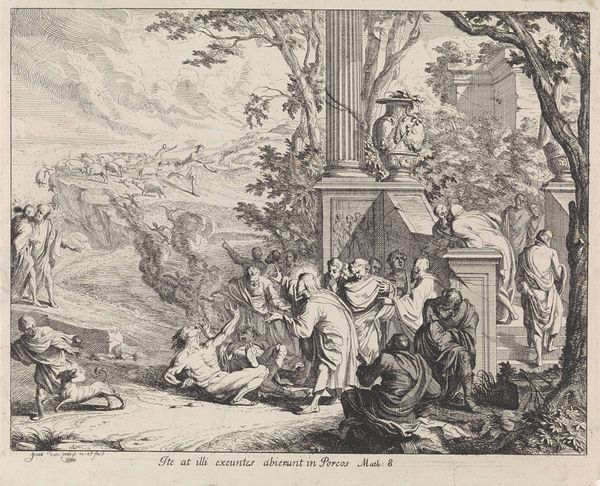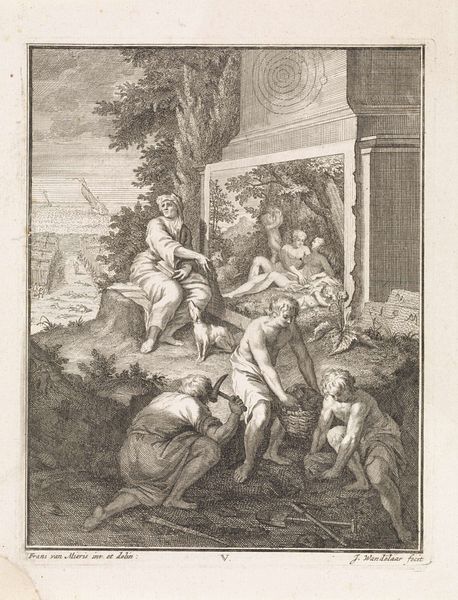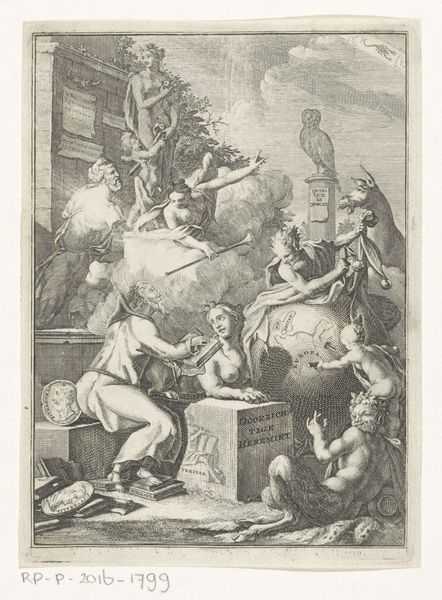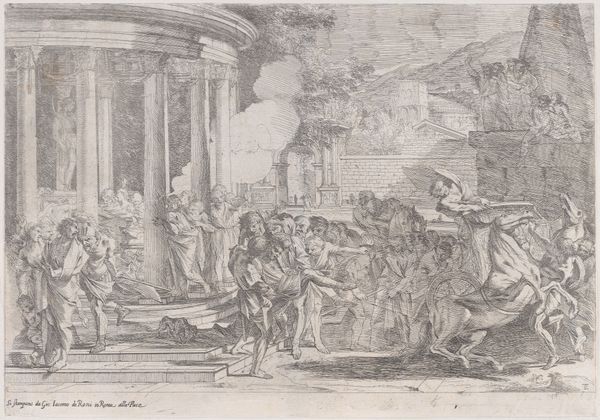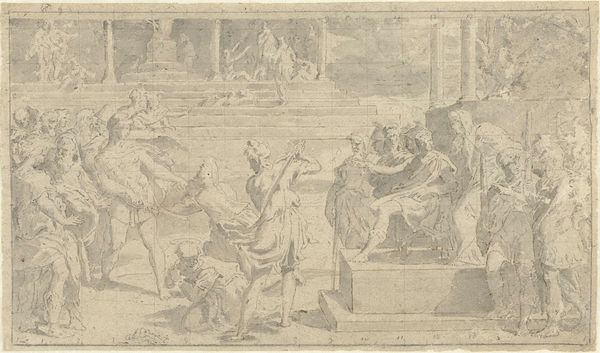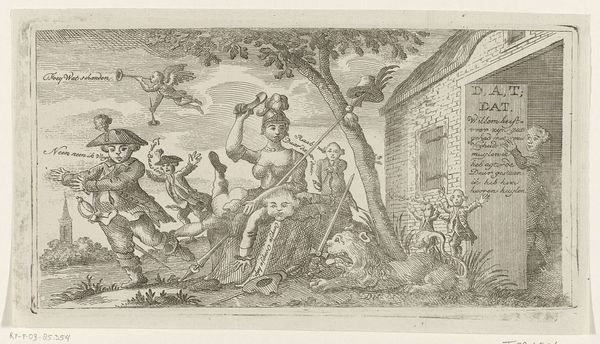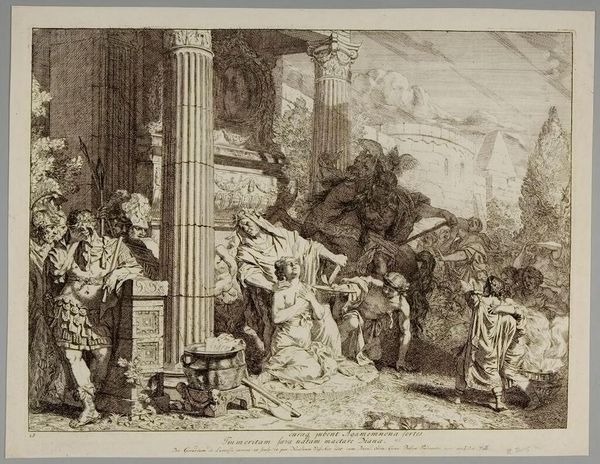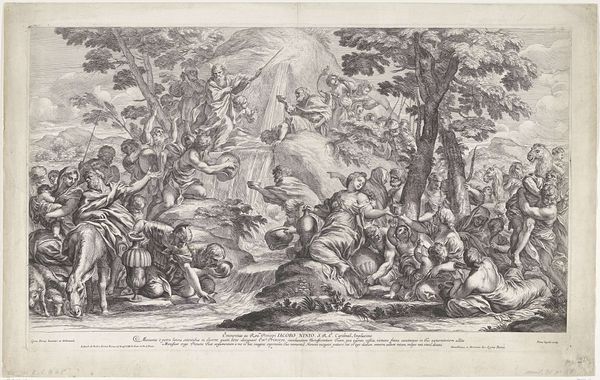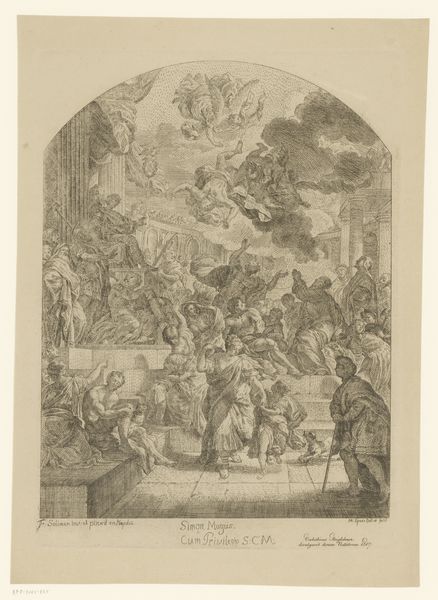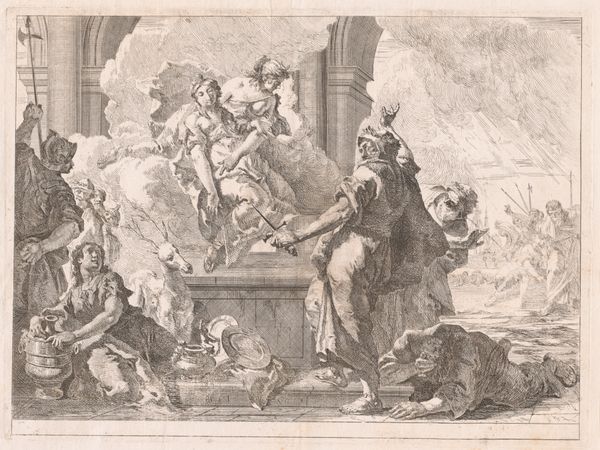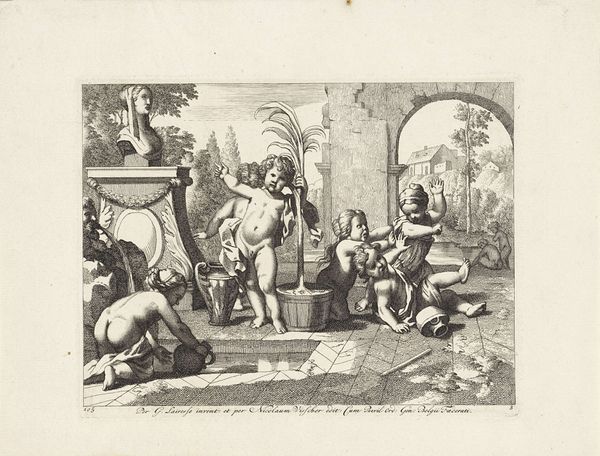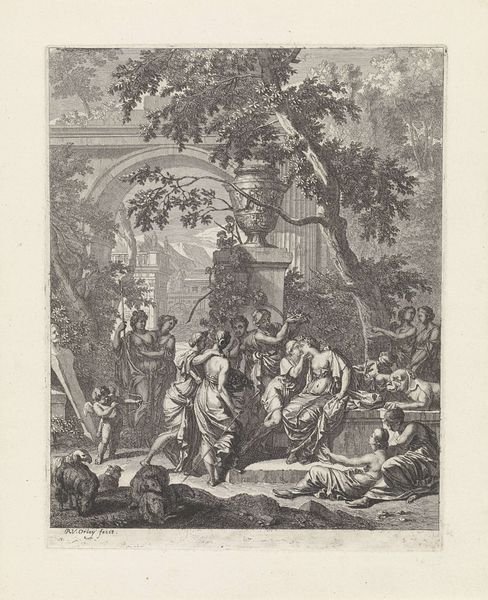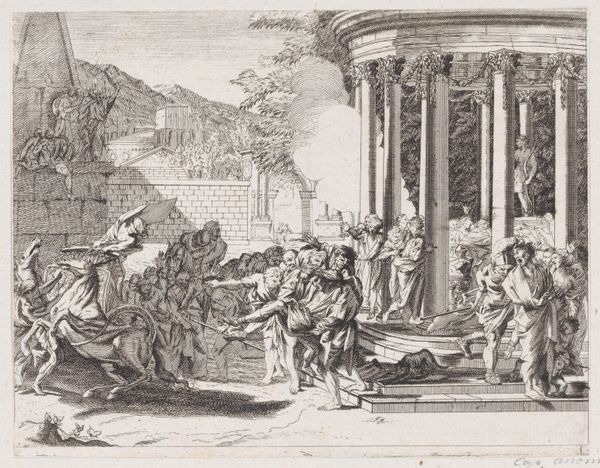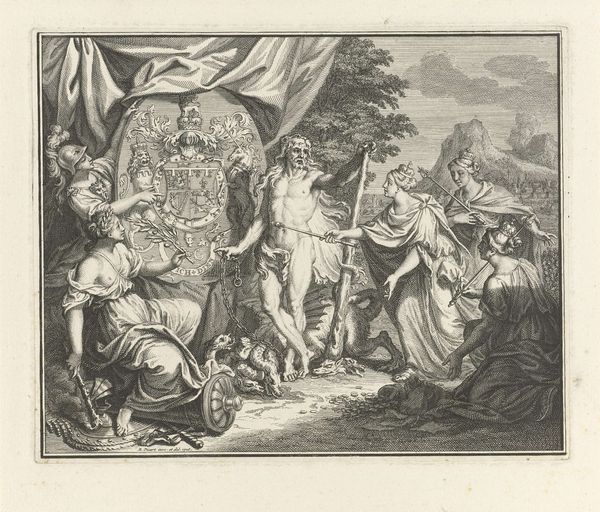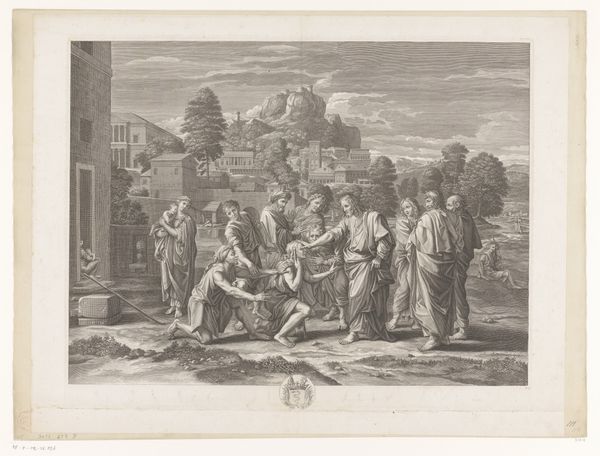
print, engraving
allegory
baroque
pen drawing
figuration
form
line
cityscape
history-painting
engraving
Dimensions: height 373 mm, width 551 mm
Copyright: Rijks Museum: Open Domain
Curator: This intricate print is titled "Satire op de schilderkunst en de Franse Academie," created sometime between 1700 and 1800 by Isaac de Moucheron. Editor: Wow, what a flurry of activity. My first impression is…chaos! Like a beautiful, historical fever dream etched in lines. I wonder what's brewing beneath the surface of this frenetic energy. Curator: The print deftly merges allegory and history painting. Note how the linear quality, evident throughout, segments the composition and defines forms, inviting close visual reading. Semiotically, the engraving reads as a critique. Editor: Absolutely. The figures almost spill out of the frame; you've got a painter leading what seems to be a very strange procession, riding proudly, maybe a bit arrogantly, on an ass—and the figures lounging at left look positively deflated. It really conveys a feeling of undermining grand artistic narratives. Curator: Indeed. Consider the calculated arrangement of objects, from the statues to the cityscape background, the line work itself, through the varying weights and densities. The artwork stages a complex dialectic, doesn’t it? The Baroque period loved the ornate. Editor: It’s more than ornamentation. This piece feels downright rebellious. You know, it almost has a comic-book quality in the over-the-top portrayal of artistic vanity being dragged down from its pedestal by, well, reality? It's hard not to laugh a little. I imagine de Moucheron was quite the character. Curator: Such intuitive reactions open new interpretive routes for understanding the symbolic structure of the work as it stands within the broader socio-political context of artistic academies. Editor: Exactly! These artists may have thought of themselves as heroic and serious, but here we get the feeling of someone calling out a stuffy culture, a not-so-subtle suggestion to lighten up, or face the ridiculous consequences. Curator: On that point, our formal assessment connects profoundly with an emotional assessment and it allows an audience to recontextualize the print. Editor: I agree. I love that this work doesn't shy away from poking fun at art and art-making. Now when I look at academic art, I'll remember this scene of satire and question those presumed power structures!
Comments
No comments
Be the first to comment and join the conversation on the ultimate creative platform.
